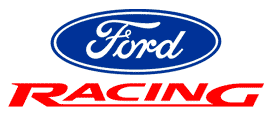

Auto Worker Site Owned by Paul Bussell
UAW Local 1999 Oklahoma City [Previous ] [Next] [Next 5 Sites] [Random Sites] [List Sites]

Last updated on 10 / 14 / 2001 at 10:31 a.m.
War was declared!
In 1963 the race wars were waged as an all out assault
In a press release given out on April 19th, 1963 by Lee
Iacocca:
Our attitude is based on three points:
Our philosophy is based on "Total Performance".
In 1963 war was waged as an all out assault.
Ford started the attack by restyling the entire Galaxie line for the '63 model year.
Then Ford introduced a new engine, the 427 cubic inch Low
Riser. This soon to become "Infamous". The 427 was
rated at 425 horse and was like a gift from God to the Ford
racers. However, even with the Ford "427" to help the
Ford racers were still getting beat. Their race cars were just
simply to heavy.
Ford did a first mid-year, they introduced the first
"half year cars". Ford brought out the Galaxie and the
Falcon sports roof cars. These soon became known as the
"Fast Backs". The new roof helped the looks and stream
lined the air flow over the rear of the car. The new Galaxie sat
two inches lower than the '62 model and was 28% more aerodynamic.
This was aimed at the NASCAR boys who badly needed the
streamlining or they would have had to come up with another sixty
horse power. The roof was quicker to come up with so Ford built
it. Though it was a great relief for the NASCAR boys, it was of
little use to the drag racers. They needed a lot less weight to
stay in the game.
Ford was getting killed at the drags. The Pontiacs and the
Mopars were running all over them. So, Ford's Performance and
Economy Group was directed to come up with a competition package
based on the 63 1/2 Galaxie 500 Sport Special 2-door fast back
model. While they were doing this Ford grabbed 5 of the A/FX cars
they had built in '62 and converted them in to '63 models. The
reason being that they were getting creamed right now and didn't
have time to wait for the "Conversion Package" to
become available.
Click here for a '63 light weight in action!
Ford Performance Package part number AS-225-39D became
available in due time. It cost $999.00 and was a very special
car. Ford started with a 2-door Custom 300 frame for the small
block engine, it weighed 45 pounds less than the big
"R-Code" 427 Galaxie frame. Each and every Authentic
Light weight is tagged with a small metal plate welded to the
left front side of the cross member. The tag says:C3AA5005-AA MOD, If doesn't have this tag it's a fake.
Corinthian white was the only exterior color, the only
interior color was listed as red vinyl , although it seems that
some were built with gold vinyl too.
The Light-Weights' standard equipment was limited to the
production 427 cubic inch / 425 horse power Lo-Riser, not the 427
High Riser, no factory Light Weight Galaxie came with a High
Riser 427 engine and a hood blister in '63, all '63's had flat
hoods and Lo-Risers
A 4-speed Borg-Warner T-10 was standard equipment as was a
4.11 rear end, the heavy duty brakes, the suspension, The above
parts were just standard "R Code" 427 Galaxie parts.
Next are the "Special" parts, light weight body parts,
half thickness rubber floor mats, a minimally trimmed red interior.
Four 6.70x15 four ply nylon black side wall tires mounted
on 5.5 inch Kelsey-Hayes wheels. No spare was provided or even
offered on this model. The mounting bracket was deleted as was
the jack and handle.
Ford went weight hunting every where on the Galaxie. The
heater, the torsion bar on the deck lid, the trunk liner and
rubber mat, one horn. The hood springs were replaced with the
prop rod from the Falcon. The arm rests were deleted along with a
few more things. These were: the dome light, rear ash trays,
courtesy lights, the sound deadener, all the sealer in the entire
car. Ford also got rid of the heavy factory bucket seats and used
the Bostrom police car bucket seats. It was rumored that Ford was
offering a $1.00 a pound incentive for pounds removed from the
Fast Back Galaxie.
The engines Ford choose for the light weights was the
standard 425 horse power 427 cubic inch Low-Riser. The 427 had
the same valves as the 406,the intakes were 2.03 inches and the exhaust was a 1.65 inch valve. Later Ford still needed more power
so they gave the 427 larger intake valves. The 2.09 incher was
installed and Ford designed different combustion chambers, and a
thicker deck for better sealing, Ford also made the ports larger.
The block was a deep-skirted affair with cross bolt mains
on the center three. The block was stress relieved and ribbed.
Ford did all this on a separate production line. The 427 blocks
also had thicker cylinder walls, deck surfaces, ribbed main
webs, and larger oil galleries than the other "FE's".
Ford used forged aluminum pistons with a 11.5 to 1
compression ratio. All the Light Weight cars with Low-Risers got
a 300 degree, high lift camshaft, hollow shell valve lifters were
often used on the 427 solid lifter engines. They got adjustable rocker arms too.
A aluminum intake manifold was used. This manifold was a
piece of work. It carried two 585 cfm Holley carbs Mounted
Backwards. This trick worked very well for the street
crowd. When Ford mounted the carbs backwards they placed the
front of the front carb over the middle of the manifold and
increased the engines drivability. This increase in part throttle
drivability was of little use to the racers, but was a great help
to the street drivers.
Ford built NO 1963 Light-Weight Galaxie with a fresh air system, period! Though it is common to
see almost all Light -Weights with the Ford the
"Blister" hoods and their high beam head lights missing
because of the air ducts that feed those Holley carbs, none came
that way from the factory. This was a 1964 option that has been
retrofitted.
The dual four setup used a air cleaner similar to the
Tri-Power, three two barrel set ups used on the 390 and 406's.
But, this one had only two huge holes in it instead of the three
"D" shaped holes of the Tri-Power.
The Light Weights all had Borg-Warner T-10 transmissions.
These had special heat treated gear sets. Ford saw even then that
the T-10 was a weak link behind the 427 and tried to do something
about it. These had a 2.36 low gear and a weight saving aluminum case. This all hung from a
aluminum bell housing. This almost
makes one wonder how anyone can still walk around on their own
feet. The factory shifter was the worst part of the Light Weight
package, The T-10 was next on the list. The shifter hung up on
reverse and the transmission was to weak for a hot 289 much less
the tremendous torque of the 427 engines.
Ford out did themselves when they designed the exhaust manifolds for the '63 models. These huge Tri-Y cast iron headers
were free flowing as anything could be. They feed into a low
restriction exhaust system.
Ford built, 4978, 427 full sized passenger cars, this
number also includes the Light Weights. No one knows for sure how
many Light Weight Galaxies really existed it '63. Ford built 170
at it's Norfolk plant, about 20 were built in Los Angeles. Holman
& Moody, a noted Ford race car contractor, built or converted
an unknown number of Galaxies to Light Weight specs using factory
parts. However, if a person were to open the glove box door and
find a little aluminum tag riveted to the inside of the door
that measured aprox. 2in. by 4 in. that said:

It is a good chance that he would have found one of the originals!
1963 1/2 Light Weight Galaxie:
[Home] [1960] [1961] [1962] [1964] [1964 A/FX Falcon] [1965] [1969-70] [Rancheros] [Cobras] [Links] [Classified Ads]
e-mail ideas and suggestions directly: Click Here